Approche neuro-sensorielle
Ce que nous savons
Ces 20 dernières années, des chercheurs ont mis en évidence un fonctionnement anormal du système vestibulaire et des altérations morphologiques dans le système nerveux central chez les patients scoliotiques.
Ces observations ont permis d´établir l´hypothèse selon laquelle la scoliose idiopathique aurait une origine neurologique et dans laquelle une altération des circuits proprioceptifs jouerait un rôle déterminant
Ce que nous ignorons
De nombreux éléments indiquent une cause neurologique / vestibulaire. Mais où a-t-elle lieu exactement ?
Ces altérations neuronales ou proprioceptives sont-elles la cause ou un effet de la scoliose et de la déformation du tronc ?
Comment la proprioception induirait une déformation de la colonne ?
Quelles sont les avancées obtenues grâce aux travaux soutenus par la Fondation Cotrel ?
À Lille, le Dr Dominique Rousié utilise une technique d’IRM qui permet la cartographie in vivo de la micros-tructure et de l’organisation des tissus cérébraux. Ses travaux ont mis en évidence deux points fondamentaux.
- Aucune altération macroscopique n´est présente chez les patients atteints de scoliose.
- Des altérations de la microstructure de la matière blanche sont présentes : les fibres sont moins nombreuses et présentent un déficit de myélinisation dans le corps calleux et dans le faisceau corticospinal, au niveau du pont (tronc cérébral). L´intégration sensorielle et motrice anormale au niveau du pont serait ainsi associée au développement de la scoliose idiopathique.
À l’Université Laval (Canada), le Pr Martin Simoneau analyse les mécanismes sensori-moteurs susceptibles de jouer un rôle dans la genèse et l’évolutivité des scolioses idiopathiques.
Il a mis en évidence une asymétrie dans les voies descendantes (corticospinales) chez les patientes atteintes de scoliose idiopathique.
Le Pr Christine Assaiante (CNRS, Marseille) a montré des différences dans la connectivité du cortex frontal entre des patients atteints de scolioses et des contrôles sains. Il semblerait que les enfants scoliotiques pourraient présenter un retard de maturation comparatif.
Au Weizmann Institute of Science, Revohot (Israel), le Pr Elazar Zelzer et son équipe ont mis en avant le rôle de la proprioception du tronc. En s’appuyant sur un modèle animal (des souris mutantes, présentant un déficit de neurone sensitif), ils ont travaillé sur le rôle central de la proprioception du tronc et ont montré que la suppression d´un mécanorécepteur clef de la proprioception du tronc (les faisceaux musculaires) induisent chez la souris une scoliose sévère. Un second projet porte sur l’étude d’une protéine, le PIEZO 2, impliquée dans la mécano transduction.
Un patient atteint de scoliose idiopathique se voit plus droit qu’il ne l’est en réalité : Il souffre de dysmorphophobie. Les objectifs de rééducation dans la prise en charge des adolescents souffrant de scoliose idiopathique ont été modifiés.
Une ablation de ce gène résulte de nouveau en une scoliose sur un modèle animal.
À Villeneuve d’Ascq, le Dr Jean- François Catanzariti a travaillé à l’évaluation du sens de la verticalité et conclu que les personnes atteintes de scoliose en ont une représentation faussée.
Les patients présentent une connaissance erronée de la forme de leur dos et des difficultés à aligner leur tronc sur la verticale. L’origine de cette anomalie pourrait être en relation avec la perception de la force de gravité et la proprioceptive du tronc, ce qui ouvre des portes à des études centrées sur la proprioception du tronc chez l´être humain.
Quel impact pour le patient ? Une meilleure compréhension de ce qu’il « ressent »
Un patient atteint de scoliose idiopathique aligne son tronc – et donc sa colonne vertébrale – sur une verticale faussée. Il se voit plus droit qu’il ne l’est en réalité : Il souffre de dysmorphophobie.
Suite à ces découvertes, les objectifs de rééducation dans la prise en charge des adolescents souffrant de scoliose idiopathique ont été modifiés.
En effet, si on veut que le patient suive les traitements proposés (rééducation intensive, corset correcteur), il est indispensable qu’il comprenne de quoi ils souffrent.
Les rééducateurs commencent par une prise de conscience de la déformation par différents moyens. La prise en charge implique un travail devant un miroir et une captation vidéo du dos du patient afin de lui montrer en direct sa déformation sur l’écran de l’ordinateur.
Il utilise ensuite le toucher, couplé avec des explications à partir de sa radiographie.
Une fois que l’adolescent a pris conscience de sa déformation, il peut apprendre à se corriger en alignant son tronc sur la verticale. Ces techniques sont réalisées par des ergothérapeutes et kinésithérapeutes spécialisés.
Les chercheurs et leurs travaux
Dr Kariman Abelin Genevois
Lauréate 2024
Dr Christine Assaiante
Lauréate 2004, 2010, 2015
Pr Robert Carlier
Lauréat 2015
Dr Jean-François Catanzariti
Lauréat 2017
Pr Jack Cheng
Lauréat 2001, 2005, 2010
Dr Winnie Chu
Lauréate 2023
Dr Rocio Garcia
Lauréat 2023
Dr Marie-Line Pissonnier
Lauréat 2015
Dr Dominique Rousié
Lauréate 2003, 2007, 2013, 2017
Pr Martin Simoneau
Lauréat 2001, 2010, 2017
Pr Elazar Zelzer
Lauréat 2018, 2023


